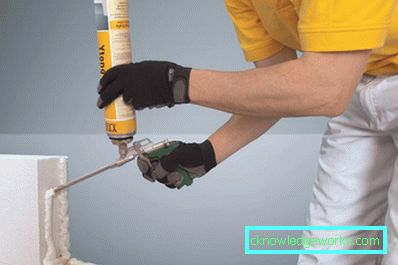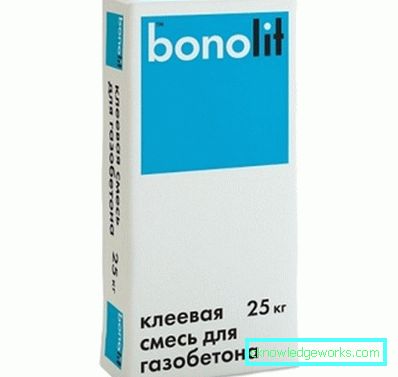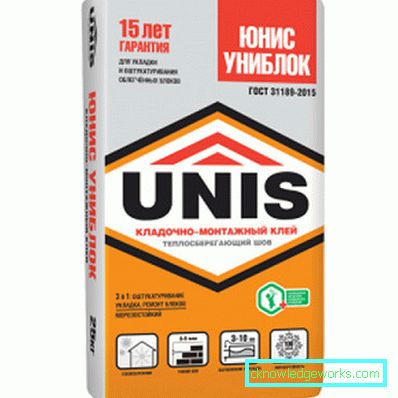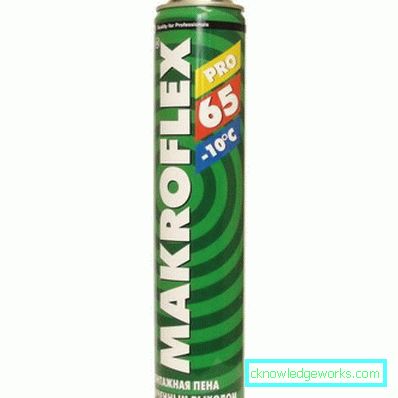Glue for blocks
Glue for blocks: types and characteristics

- Features
- Kinds
- Purpose
- Forms of release
- Manufacturers Overview
- How to calculate the quantity?
- Instructions for use
- How to store?
An alternative to classic brickwork is the construction of walls and partitions from the building block. The popularity of block structures has led to a variety of types and sizes of masonry material. The building block is placed on a special adhesive mixture, replacing the sand-cement mortar.
Features
For bonding block elements used special glue. The use of adhesive mixture allows to obtain a thin masonry joint, which has an advantage over cement mortar. The hardened glue for blocks possesses high waterproof, strength and frost-resistant properties. The solution acquires the adhesive properties due to the composite ingredients. It is based on fine sand and cement or portland cement.


Additionally, they include polymers, plasticizers and modifiers, improving the quality of the mixture. They allow to achieve low thermal conductivity, high tenacity with the surface, increase plasticity, biological stability, change the setting time and freeze the solution.
Laying on the glue allows you to improve the heat-saving quality of the building, since the minimum thickness of the adhesive layer does not allow for the cold inside the building material. The thickness of the solution from 1 to 3 mm creates solid monolithic buildings, giving an attractive appearance to the entire building.
The use of glue allows you to reduce the work time on the construction of block masonry.
The speed of mixing the mixture eliminates the use of bulky tools. There is no need to calculate and respect the proportions of the components. The manufacture of the working mixture occurs in small portions using pure water.

Kinds
For the installation of blocks, you can use two types of adhesive compositions:
- Mounting polyurethane adhesive for blocks is a ready-made one-component composition, which polymerizes, interacting with moisture from the ambient air. Maximum strength is achieved in 1 day. It is applied in the form of foam stripes. It is used at a temperature of -10 degrees. One pack of adhesive foam can replace a bag of dry mix.

- Masonry cement-based mortar is supplied as a dry powder mixture. When mixing with water, an alkaline chemical reaction occurs, which promotes the setting and hardening of the components after a few hours. Cement adhesive composition, depending on the temperature mode of operation is divided into winter and summer. The mixtures used in the warm season cannot be operated at an ambient temperature below + 5 ° С. Technical efficiency of installation will be maximum at + 20 ° С. Frost-resistant glue is designed for laying blocks at temperatures from -10 to +15 degrees.
When applying the winter version, you need to know the features during use. The mixture is kneaded with warm water so as to consume the solution in half an hour.

Purpose
Special glue mix is intended for wall heat-insulating and constructional blocks. Products for cellular concrete blocks and polystyrene concrete elements are produced separately. The main difference between the two is the viability of the diluted mixture. Till 4 o'clock it is possible to use structure for polystyrene concrete. Glue intended for the laying of lightweight cellular blocks, suitable for joining lightweight aggregate, wood concrete, aerated concrete and silicate blocks. For laying glass blocks in the interior, glue can also be used as dividing partitions.
The popularity of the use of foam for low-rise construction is determined by its insulating properties. For masonry walls of foam concrete elements suitable composition with fine sand, creating a layer of no more than 5 mm.


When erecting external walls of porous ceramic blocks, it is recommended to use an adhesive solution with low thermal conductivity, which creates a thin warm joint. In order to avoid bleeding into the air jumpers, a glass-fiber mesh is used. Since the ceramic block was created with a tongue-and-groove system, there is no need to apply glue between the elements. Glue mortar is not intended for application on an uneven base of concrete with the addition of PGS. The first row is laid out with a cement-sand mortar, leveling in height for the further erection of partitions. Glue is not suitable for tongue-and-groove gypsum blocks, with the help of which internal partitions are erected.


Forms of release
Dry mixes designed to hold the blocks are supplied in a package of 25 kg. Some manufacturers for industrial construction packaged products of 40 and 50 kg in paper bags. The finished solution may be white, gray or dark gray. The composition of the white glue includes Portland cement. All-purpose glue of a dark shade is suitable for use at low temperatures. In addition to ready-made dry mixes, there is a polyurethane based adhesive foam on sale. This composition is available in cylinders of 750 ml.
Ease of use of the polyurethane composition with a special nozzle due to the purity and speed of application without prior preparation and use of additional tools and containers.


Manufacturers Overview
There is a wide variety of adhesive products for the blocks on the construction market. Works with ready solutions can be carried out inside and outside the room. The composition does not include toxic substances that adversely affect human health. It is worth noting several of the most popular manufacturers of adhesives for blocks:
- German holding Henkel manufactures products under the brand Ceresit. The masonry mix Ceresit ST 21 is intended for gluing silicate and light concrete blocks. For masonry at a temperature of from 0 to +15 degrees produce a variety of product Ceresit CT 21 (Winter). The consumption per 1 cube of material depends on the size of the blocks and ranges from 16.5 to 20 kg with a layer of 2 mm.
- Company Kolmix delivers the glue "Stroy Moment SMK-10" intended for the erection of walls of structural elements. Average product consumption is 20 kg / m³. For installation at a temperature of -15 degrees antifreeze additives are included in the solution.


- For the laying of blocks of cellular concrete used a mixture of "Block" from the company Volma. With a minimum consumption of 1.4 kg / m², it forms a thin seam of 1 mm.
- Prestige LLC produces adhesive composition for foam and aerated concrete, which includes, in addition to cement-sand mixture, additives imported. The solution has an increased viability of up to 3 hours. The optimum seam thickness is 5 mm. Shelf life - 6 months.
- Corporation "Kreps" specializes in the supply of masonry structures, including for block elements. The Kreps KGB solution is suitable for use within 4 hours for laying a 2–3 mm joint. When making an additive "Kreps Antifreeze" you can apply the solution at temperatures up to -10 degrees.



- Factory "Aerok SPb" produces autoclaved aerated concrete and glue to blocks. Two options for the composition of adhesive products allows for installation work from -15 to +35 degrees. It is suitable for thin-layer deposition not higher than 3 mm. Consumption with a two-millimeter layer is 15–19 kg / m³, depending on the thickness of the block.
- Good all-purpose adhesive releases OJSC "Bonolit - Building solutions". It is suitable for use from -10 to +25 degrees.
- Company group Unis developed the Uniblock masonry and installation glue, which can be used for plastering, minor repairs and laying blocks on the basis of concrete and silicate. It is suitable for leveling masonry drops up to 2 cm. With the help of "Uniblock" you can repair cracks and chips in the material.



- Etalon Teplit glue manufactured by the company is suitable for laying gas silicate and foam concrete. "Etalonstroy" since 2004. With a thickness of 1 mm, 1.4 kg / m² of mortar is removed. The maximum seam reaches 6 mm. There are compounds for use in the cold and warm season.
- Belarusian Combine OJSC "Zabudova" manufactures low-cost glue mixes for laying blocks of cellular concrete of two varieties - winter No. 118.3 and summer No. 118.
- Blocks of gas silicate and expanded clay concrete can be combined with a mixture of CM 999.9, manufactured LLC "Formamaterialy". It forms a layer of 2–12 mm with a flow rate of 1.8 kg / m².



- Among the polyurethane compositions stand out Ytong Dryfix adhesive foam from a German company. Hella.
- Polish manufacturer Selena produces glue for ceramic blocks and aerated concrete Tytan Professional.
- Construction foam "Macroflex" to bind any building elements the company produces Henkel.



How to calculate the quantity?
Before installation, pre-purchase construction and consumables. To understand how much adhesive mixture is consumed, you need to know the total construction area and the volume of building blocks. The calculation takes into account several additional parameters that affect the flow of the amount of glue:
- Layer thickness is critical. The thinner the seam, the less consumption.
- Temperature and humidity conditions. In the sun, moisture is quickly evaporated from the solution. For the winter variety of composition, consumption may increase by 10%.
- High qualification of the bricklayer. Knowledge of the features of working with block elements and special tools reduces the amount of applied solution.
- External characteristics and quality of the unit. The accuracy of the dimensions of the faces of the block will allow to eliminate the glue consumption for the elimination of defects and differences in the masonry. The ability to absorb moisture from the adhesive solution depends on the properties of the material used to manufacture block elements.
- The manufacturer, depending on the composition of the product determines the consumption rate.


Manufacturers claim that 25 kg of packaging is enough for laying 1 m³ of the block. Consumption 1 m² of surface will be 5 kg with a layer of 2 mm. This means that the number of bags of glue corresponds to the volume of the purchased block. With an ideal thin seam, consumption will drop to 5 kg per 1m³.
Instructions for use
Before use, the glue is diluted with water according to the manufacturer's instructions. The entire volume needs to be consumed in 2-3 hours of laying, so there is no need to make a large amount of the solution. In accordance with the indicated proportions (200–300 g per 1 kg of dry matter) pour the powder into a container with water at room temperature. If you mix the winter mixture, the water should be + 30-40 degrees. Knead the glue should be mechanically manually or using tools. The exposure time before re-mixing is 5–10 minutes.
The solution is applied to the cleaned surface, as dust impairs the adhesive properties of the material. In hot weather, the design can be wet. Every 15 minutes the whole mixture should be stirred. The mixture should be spread with a spatula with teeth, a masonry trowel or a carriage with a thin layer 2-3 mm thick over the entire surface. If the block is smooth-wall, and not grooved, then the solution is applied to the vertical wall of the previous element.



The unit is installed on the base, pressing and knocking a mallet, leveling. The amount of glue should be enough so that when pressing on the block element, the glue slightly leaves the seams on both sides. Rows are scrambling. When laying the blocks with your own hands, you need to remember that the setting of the glue is 10 minutes, during which you can fix the placement of the structure. After the wall is erected, the masonry dries within two days. On the third day, the adhesive solution reaches its final strength.
How to store?
Mix on the basis of cement is stored 1 year from the moment of production in tight packing. In the room, the humidity level should not exceed 60–70%; in the winter time, the mixture should be stored preferably in a heated room. Opened packaging with glue must be protected from moisture, as petrification may occur.
Diluted stacking solution cannot be stored. It needs to be worked out 2–3 hours before thickening and loss of elasticity.
In the next video you will find aerated concrete on glue-foam.